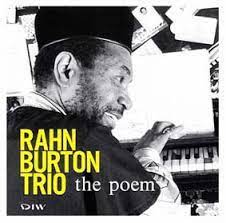
Daily Dose Of Jazz…
Rahn Burton was born February 10, 1934 in Louisville, Kentucky. He began taking piano lessons at age 13, and worked locally in Louisville before playing his first gigs with Roland Kirk. He toured with Kirk from 1953 to 1959 and recorded with him into the early 1960s, contributing the composition Jack the Ripper to the 1960 release Introducing Roland Kirk.
Moving on to play local gigs in New York City and Syracuse, New York for a short time in the early 1960s, he returned to local playing in Louisville. During 1964-65 he played organ in George Adams’s touring ensemble, and played briefly with Sirone around the same time.
1967 saw Burton re-joining Roland Kirk’s group, playing with him at the 1968 Newport Jazz Festival and on several recordings through 1973. He also founded his own ensemble, African American Connection, which included Roland Alexander, Bob Cunningham, Ricky Ford, and Hannibal Marvin Peterson.
He recorded extensively as a sideman in the 1970s and 1980s with George Adams and Hannibal Peterson, Carlos Garnett, Beaver Harris, Jemeel Moondoc, Charlie Rouse, Leon Thomas and Stanley Turrentine. His associations in the 1990s included work in Austria with Nicholas Simion and a trio recording in 1992 with Walter Booker and Jimmy Cobb.
Pianist Rahn Burton, who was also known as Ron Burton or William Burton, transitioned on January 25, 2013 in Manhattan, New York.
More Posts: bandleader,history,instrumental,jazz,music,piano
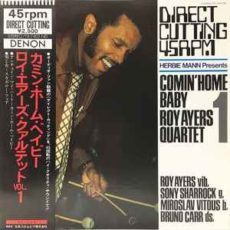
Daily Dose Of Jazz…
Edward “Bruno” Carr was born on February 9, 1928 in The Bronx, New York. Growing up he lived around many different ethnic groups, including neighborhoods with German and Italian residents. Listening to the radio as a youth, he heard different styles of music while developing his ear and his memory. By the time he started playing professionally he had anarsenal of songs that he surprised band leaders he already knew and had no need for charts when they handed them to him.
As a timbale player in Latin bands, one can hear the inflection in the way he plays his small tom-toms at times. Though not a household name, his playing with a lot of fire and conviction made him a sought after drummer among the jazz elite. Kenny Burrell, Billie Holiday, Ray Charles, John Coltrane, Charlie Parker, Michael Franks, Aretha Franklin, Monte Alexander, Stanley Turrentine, Roy Ayers, King Curtis and Harry “Sweets” Edison have all had him on their bandstand.
Here recorded several single albums, each with Aretha, Curtis Amy, Walter Davis Jr., Lou Donaldson, and Eddie “Cleanhead” Vinson, however, his largest body of work was with Herbie Mann, recording eighteen albums with the flutist from 1964 to 1970.
Drummer Bruno Carr, who was a frequent collaborator with Ray Charles, transitioned from lung cancer on October 25, 1993 in Denver Colorado at the age of 65.
More Posts: drums,history,instrumental,jazz,music
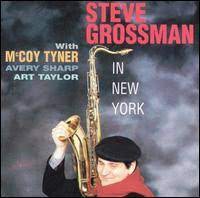
Daily Dose Of Jazz…
Steven Mark Grossman was born on January 18, 1951 in Brooklyn, New York to Rosalind, an amateur pianist, and Irving, an RCA salesman and later president of KLH Research and Development Corporation. At 18, he went on to replace Wayne Shorter in Miles Davis’ jazz-fusion band. Then, from 1971 to 1973, he was in Elvin Jones’ band.
In the late 1970s, he was part of the Stone Alliance trio with Don Alias and Gene Perla. The group released four albums during this period, including one featuring Brazilian trumpeter Márcio Montarroyos. The albums also feature an array of other musicians. They went on to release three live reunion albums during the 2000s.
Fusion and hard bop saxophonist Steve Grossman passed away of cardiac arrest in Glen Cove, New York, on August 13, 2020, at the age of 69.
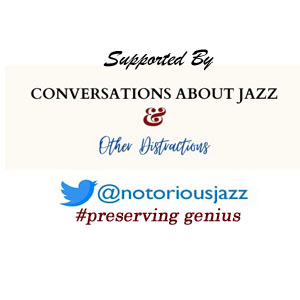
More Posts: bandleader,history,instrumental,jazz,music,saxophone
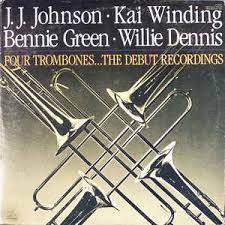
Daily Dose Of Jazz…
Willie Dennis wsa born William DeBerardinis on January 10, 1926 in Philadelphia, Pennsylvania. After working with Elliot Lawrence, Claude Thornhill, and Sam Donahue, he went to work with Charles Mingus, appearing on two of Mingus’s albums in 1959, Blues & Roots and Mingus Ah Um. In 1953, due to his relationship with Mingus he recorded Four Trombones (on the bassist’s Debut Records label and was released in 1957. The other three trombones were J. J. Johnson, Kai Winding and Bennie Green.
In 1951, Dennis began studying with Lennie Tristano. To make ends meet, he worked as an attendant at the Museum of Modern Art. The fullest recorded example of Dennis’s solo work is on a little-known 1956 Savoy disc by English pianist Ronnie Ball, who was also a Tristano student. The album was titled All About Ronnie, and included Ted Brown and Kenny Clarke.
He toured with Mingus in 1956, published an essay, The History of the Trombone, in Metronome. By the late 1950s Willie had returned to his big band roots and joined Buddy Rich in 1959 after stints with Benny Goodman and Woody Herman. During the 1960s, he often performed with Gerry Mulligan.
He had an extremely fast articulation on the trombone, which he obtained by means of varying the natural harmonics of the instrument with minimal recourse to the slide, a technique known as crossing the grain. He recorded with Cannonball Adderley, Manny Albam, Al Cohn, Mundell Lowe, Gary McFarland, Gerry Mulligan, Oliver Nelson, Anita O’Day, Shirley Scott, Zoot Sims and Phil Woods.
Known for his big band musicianship but who could also execute as an excellent bebop soloist, trombonist Willie Dennis, who was married to Morgana King in 1961, transitioned due to an automobile accident in Central Park on July 8, 1965 in New York City.

More Posts: bandleader,history,instrumental,jazz,music,trombone
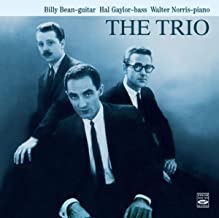
Daily Dose Of Jazz…
William Fredrick Bean was born on December 26, 1933 into a musical family in Philadelphia, Pennsylvania. His mother played the piano, his father was an amateur singer and guitarist, and his sister sang professionally. He started on guitar at the age of twelve.
His father taught him some of the basics on guitar before he received lessons from Howard Herbert. He went on to study with Dennis Sandole for a year. During the late 1940s and 1950s, he performed at venues in the Philadelphia area, until in the mid-Fifties he moved to New York City and recorded with Charlie Ventura and Red Callender. By 1958 he was moving to the West Coast and settling in Los Angeles, California to record for Decca. In Los Angeles, he worked with Buddy Collette, Paul Horn, John Pisano, Bud Shank, Milt Bernhart, Les Elgart, Herb Geller, Lorraine Geller, Calvin Jackson, and Zoot Sims.
Returning to New York City in 1959 after accepting Tony Bennett’s offer to join his band, Bean remained with Bennett’s band for less than one year. Hal Gaylor, who had been Bennett’s bassist, assembled a trio with Bean and pianist Walter Norris, calling themselves The Trio. They recorded an album for Riverside Records in 1961. Finding it difficult to find work, the trio disbanded shortly after recording.
Bean performed with Stan Getz, Herbie Mann, and John Lewis, recording albums with Mann and Lewis. He co-led six recording albums and another 16 as a sideman. Returning to his hometown of Philadelphia, guitarist Billy Bean retired in 1986, and passed away on February 6, 2012.
More Posts: bandleader,guitar,history,instrumental,jazz,music



